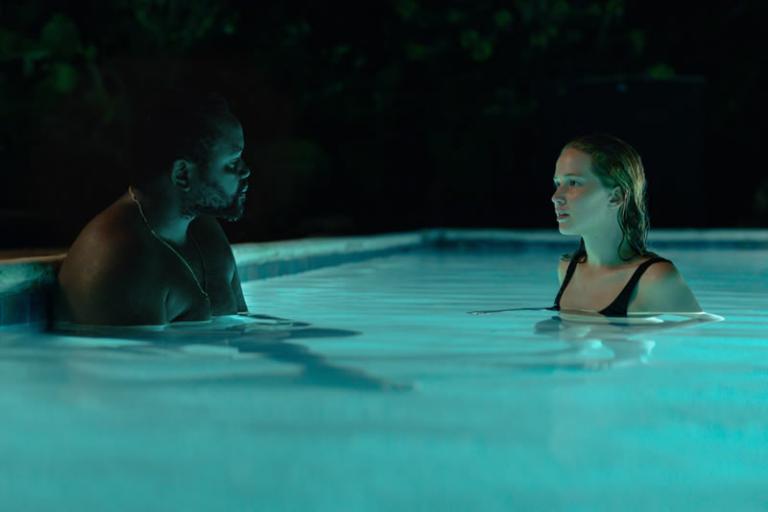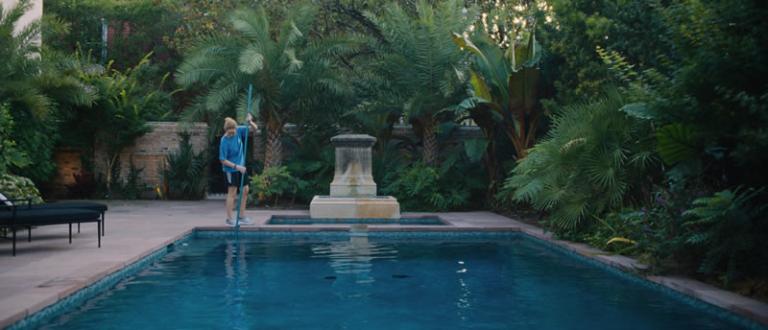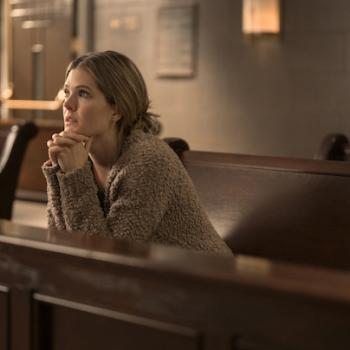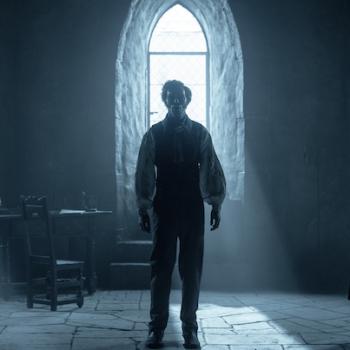
Causeway, Apple TV+’s new awards-season hopeful, is not a particularly religious movie. The only overt nod to faith came through a single cross dangling from a rear-view mirror.
But Jennifer Lawrence’s latest film is still filled with spiritual themes: sin and redemption; pain and hope; salvation and second chances. And in the midst of it all flows one potent symbol: water.
The film’s use of water is especially interesting, given that its main protagonist, Lynsey (played by Lawrence), just returned from Afghanistan—a country not exactly known for it. Overall, it’s quite dry and, for American soldiers serving there, hardly hospitable.
But Lynsey found a home there. She enjoys the Army. She liked to serve alongside and spend time with her fellow soldiers. And she’d be there still had not an IED blown her vehicle sky-high.
Physically, the blast left Lynsey pretty much intact. But her brain suffered some extreme trauma. When she gets back to the States, she can’t even walk. She can barely communicate. Her first task is to really get her brain and body on speaking terms again. She’s coached and cared for by a kindly nurse (Sharon, played by Jayne Houdyshell), who helps Lynsey get over the worst of her problems. But Sharon tells her that she’s got plenty of work ahead of her. She’s not healed—not even close. But to finish the job, Lynsey will have to go back “home,” to a place practically surrounded by water. New Orleans.
(Quick caveat: This R-rated movie has plenty of problematic content, as well. Check out my review of Causeway to see if it’s navigable for you. Also, we’ll be getting into some minor spoilery territory, by the way, so If you haven’t seen Causeway and want to, come back to this column after you have.)

Water, Water, Everywhere
We all know that water is foundational for life. We’re mostly made of the stuff. Without it, crops wither and livestock die and we all shrivel up to nothing. The writers of the Bible—who lived in some pretty arid lands themselves—knew better than most how important water is. In fact, it’s sometimes used as a symbol of life itself.
It’s also often a divine instrument of destruction, too. Just ask Noah. Just ask all of Pharoah’s charioteers when they get swept away in the Red Sea. But even here, we see water as not just destructive, but cleansing, wiping away the filth of the world and clearing the path for a better, brighter, future.
The beautifully symbolic act of baptism combines all of these elements. It is an act of destruction. (“We were buried therefore with Him by baptism into death,” Paul writes in part in Romans 6:4.) It is an act of cleansing. (“Rise and be baptized andwash away your sins, calling on his name,” we read in Acts 22:16.) And it is an act of symbolic resurrection—dying to your old life, and being raised again in, as Paul again writes in Romans, “new life.”
In the opening stanzas of Causeway, the water of New Orleans seems to be more of a destructive force. And perhaps even the setting was intentional: As a reporter, I covered some of the aftermath of Hurricane Katrina when it swept through the southern U.S. in 2005. It killed nearly 2,000 people in New Orleans alone, and I remember driving through the city days later—water still flooding the streets.
Those floodwaters are long gone by the time Lynsey returns, of course. But it’s still not a place she returns to willingly: It’s a place that she’s forced back to. She tells her new friend—an auto mechanic named James—that she and her brother were “trapped” in their family house. “I’m the only one who made it out,” she says. You can almost imagine the house as an underwater cage that, Houdini-like, Lynsey managed to escape.
Now she’s back. And she’s desperate to escape again, before her family drags her under.
But James (Brian Tyree Henry) carries his own trauma. The mechanic is missing a leg, and James eventually tells Lynsey how. He and some others were driving across the Causeway (essentially a 24-mile bridge across Lake Pontchartrain) when they crashed. He says that his leg was so badly mangled that he could stare at the sole of his shoe. And he lost much more than just his leg.
But even with all this pain associated with water, Causeway quickly turns it into a symbol of healing. Even in the movie’s opening moments, we see Lynsey in the shower, slowly sponged clean by Sharon—emphasizing Lynsey’s vulnerability and Sharon’s kind, slow care.

Washing Clean
When Lynsey returns to New Orleans, she picks up a job cleaning pools. I love how director Lila Neugebauer introduces us to this new aspect of Lynsey’s life. About the first thing we see is a dirty drain, and Lynsey’s new boss tells her just how disgusting those drains can be—and how much they say about the owner. It gets to the cleansing aspect of water, not just of physical dirt, but the sins and emotional baggage, too.
It’s interesting, too, that when we first see Lynsey at work, she’s literally cleaning the pools with a 10-foot pole, high and dry. Yeah, admittedly, pool-cleaners don’t often dive into the pools themselves to do their work. But it’s still a potent visual for the viewer: It’s almost as if she’s unwilling to wade into the water—to cleanse away not just the mental and emotional trauma that she suffered in Afghanistan, but the trauma that she suffered in New Orleans, too. She doesn’t want to get too close.
But as the movie runs, Lynsey finds herself in water more and more, and each scene comes with the tang of transformation.
It’s not always comfortable transformation, admittedly. When she takes her first tip in a client’s pool, she submerges herself for a good long while before she breaks the surface, almost panicked. But we see hints of healing, too. Throughout most of the movie, Lynsey keeps her irresponsible mom at a distance. Only when they spend a little time in a tiny wading pool together, sipping margaritas, that they really feel like a family. And when Lynsey’s mom leaves the pool to talk on the phone, it’s almost as if stepping out of the water broke those bonds all over again.
But when Lynsey invites James to swim with her one night, the pool becomes almost a sacred space. James tells the full story of the Causeway accident—a story filled with shame and pain. The pool becomes a confessional, the water holy. And for a moment, it’s as if James begins the process of washing away his guilt. It’s as if the film is telling us that James, at least, is going through a sort of secular baptism. All that baggage, all that sin is in the process of being wiped away, to wind up in the pool’s gunky drains.
Then Lynsey fouls the space with a mistake. And in another symbolically resonant move, James gets out of the water, gets dressed, and then accuses Lynsey of ignoring her own baggage. How she’d rather run back to Afghanistan than engage in the hard work of repairing relationships. How she’d rather flee than deal with her own home-grown trauma. How she treats everyone like “they let you down instead of the other way ‘round.”
She goes home and, again, steps into water. This time, it’s just a puddle of it, in her bathtub. She sits in it in her underwear, shivering and broken. It conveys everything we need to know in that moment: How bad she feels that she apparently lost her friendship with James; how much his words stung her. And in a way, this pitiful scene feels like a baptism, too. She dies a little there. But she finds new life, too.
Shortly thereafter, Lynsey visits her brother in prison—something she’d never done before, it seems. She visits James and tries to patch things up with him. She decides not to go back to Afghanistan. Lynsey knows she has more healing to do: Healing from her brain injury, yes, but healing from other wounds, too, and helping others to heal.
She’s a new person by the time the movie closes—a little closer, I think, to the person that God would want her to be. She’s less selfish, more giving. And while she knows she still has plenty of work ahead of her—recovery and penance may go hand in hand—Lynsey’s made a start.
The purpose of the actual Lake Pontchartrain Causeway is pretty obvious: It’s a bridge that takes you from one place to another—to move people where they are to where they want to go. In Causeway, Lynsey and James are both on a journey, moving from where they are to where they want to go. But here, they don’t go over water to get there: They go through.













